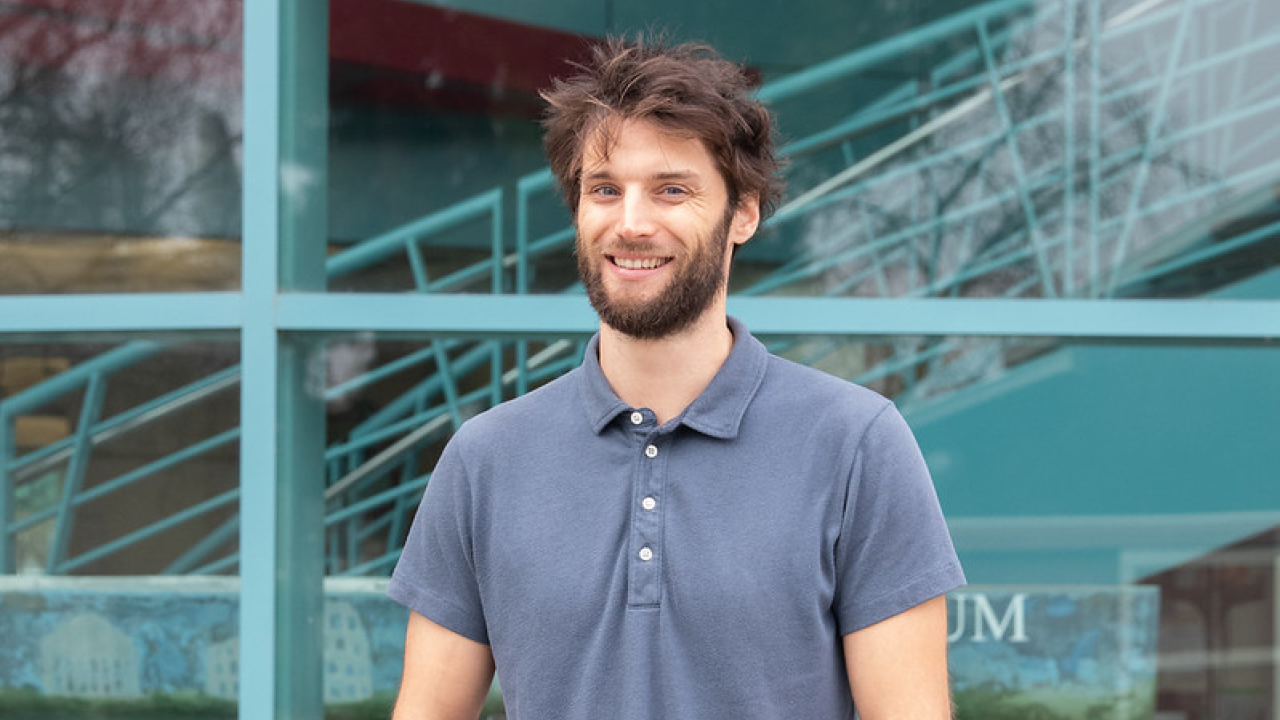
Let There Be Light: ECE professor William Putnam's Lab Receives NSF and DOE Awards for Quantum and Ultrafast Photonics
UC Davis electrical and computer engineering (ECE) professor William Putnam’s lab received a National Science Foundation award for using vacuum electronics to generate entangled photons.
As Putnam explains, “This project involves exploring vacuum electron devices (VEDs) in the quantum, i.e., single-electron, limit. Conventionally, in VEDs, a huge number of electrons pass over structured surfaces to generate electromagnetic waves. We’re exploring what happens when we use just a single electron in this project. Ultimately, we’re trying to see if we can use these devices to generate single photons with an interesting (and useful) quantum property known as entanglement.”
Researchers usually pass light through special kinds of crystals to produce entangled photons. When one color of light enters these crystals, the electrons in the crystal can vibrate in ways that produce other colors of light. This new, differently colored light can also have interesting quantum properties, such as entanglement.
In Putnam’s lab, instead of using a crystal to generate entangled photons, they’ll use a beam of electrons. As Putnam explains, “What's really new about our project is instead of using vibrating electrons in a crystal to produce entangled photons, we'll be using a beam of electrons traveling in a small vacuum region. This beam of electrons should actually give us much more control over the radiation process”.
The entangled photons generated in this project are very exciting for future applications in advanced communications and computing technologies. However, Putnam and his lab are most interested in using them for sensing. As Putnam explains, “If these single-electron VEDs can really produce the entanglement we’re hoping for, it will enable the development of special, ‘heralded’ single-photon and single-electron sources which could improve electron-beam lithography and microscopy.”
In addition to the NSF award, Putnam’s lab also recently received a Department of Energy award, together with collaborators at MIT, to study how electron beams collectively behave at ultrafast timescales when interacting with a photonic structure. Putnam explains the ultimate goal of this research project – creating light.
“In vacuum electronic devices, like the ones in our NSF project, electrons pass over structured surfaces and generate electromagnetic waves. The process through which these electrons actually generate these waves is a very interesting one, and we’re trying to probe it at extremely short timescales such that we can better understand it and use it to produce new colors of light.”
Specifically, Putnam’s lab and their collaborators will study how electrons collectively interact and order themselves as they traverse surfaces with nanoscale corrugation. They aim to study this process at timescales of around one femtosecond. One femtosecond is equal to 10^-15 seconds, that is, 0.000000000000001 seconds! They aim to achieve this extreme time resolution using ultrafast lasers to modulate and streak electron beams in a modified electron microscope.
As Putnam explains, research into understanding these electron-beam-driven light sources could have many research and industrial applications: “Overall, using electrons in free-space beams (as opposed to in materials) to produce light affords us far greater flexibility in our light sources. Beyond producing entangled photons, these sources could be useful for producing difficult-to-generate wavelengths of light and ultra-high optical powers.”
